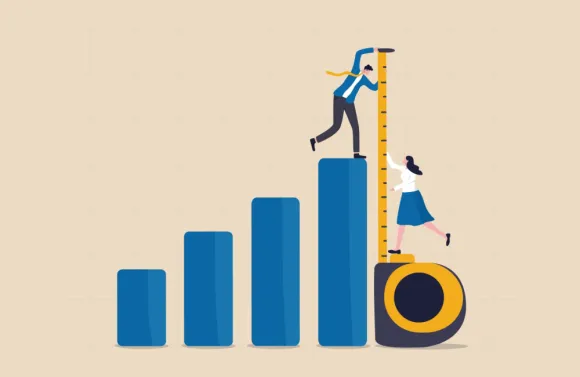
Today, Employee Resource Groups (ERGs) exist at 90% of Fortune 500 companies. And while it’s common knowledge that ERGs bring together like-minded employees who share similar interests, hobbies, backgrounds or identities, they provide more than just social connection. ERGs are ideal places for HR to thrive, not simply in terms of organizational culture, DEI efforts or talent management – but also employee benefits.
Here, we’ll examine how benefits leaders can strategically leverage ERGs to both raise awareness of and drive engagement with employee benefits. But first, let’s explore the different types of ERGs and how to set them up for success within your organization.
What are the Different Types of Employee Resource Groups?
At their core, ERGs can help make employees feel included and foster a sense of belonging, giving employees an outlet to feel heard and seen. In addition to helping establish a more personalized organizational culture, they can also offer an avenue for employees to take on leadership roles within an organization while accessing mentorship opportunities.
According to the Boston College Center for Work and Family, ERGs have been around since the 1960s. They were started as race-based employee groups in response to racial tensions and began at Xerox with the support of then-CEO Joseph Wilson. Flash forward to today, and you can find ERGs of many different types, including:
Attribute-centered ERGs
Attribute-centered groups focus on employees’ characteristics or demographics. Examples include those sharing identities within gender, LGBTQIA2S+, ethnic, racial and generational groups. These groups help members from historically underrepresented populations address workplace biases, give voice to common challenges, present solutions and opportunities, and enjoy a “save space” to share their experiences.
Affinity ERGs
Affinity groups bring employees with similar interests together to foster connection and potentially reduce feelings of isolation. Members might engage in shared interests like photography, pet ownership or running. They could also create community and engagement when it comes to a topic like caregiving, for instance, where individuals could benefit from sharing resources or simply supporting one another.
Cause-based ERGs
Much as it sounds, cause-based employee resource groups promote awareness of social, political or organizational movements. For example, mental health awareness, people with disabilities and veterans are all interests that cause-based ERGs may give voice to.
Professional or development-based ERGs
Professional or development-based ERGs reflect employees' workplace interests, helping them in their roles, past or present. Examples include early career employees, employee alumni or geographic areas.
Steps to Creating ERGs at Your Organization
Getting started with ERGs at your organization can happen in two ways – organically or formally.
1. Identify and start your groups
- The organic method. The story of how ERGs start organically often begins with a few employees getting together over coffee, for example, to talk about their shared experience as working parents or remote employees who live in the same geographic location. They may meet once a week or start an organizational messaging channel that grows to include more employees.
- The formal approach. Perhaps more commonly, ERG programs are created within HR or by a person who leads DEI efforts within an organization. They may look at their company demographics or solicit feedback from peers and colleagues to get group ideas. More impactfully, they can survey their workforce population to understand the types of groups that may be important to them.
2. Gain leadership buy-in & assign executive sponsors
ERG programs can be set up for success with support from company leaders who truly understand the cultural importance of ERGs and can envision their long-term positive impact on the organization. Playing their role, executive sponsors can continually support the ERG by providing mentorship to ERG leadership and helping drive forward any initiatives recommended by the group members. In fact, McKinsey notes that “professional-development options, networking opportunities, and access to company leaders” are especially important aspects for recognizing and rewarding those who lead and run ERGs.
3. Set up organizing principles
Establishing clear guidelines for who each group is for, why the group exists (its mission and vision), how long the ERG leader will serve, and how members can participate and engage can help get groups off to a strong start. Establishing these organizing principles will also keep everyone involved aligned from the start and moving forward, even giving those on the periphery, like company leadership, a clear understanding of groups’ purpose and how they might support it.
4. Promote ERGs company-wide
Gaining traction means communicating about the ERGs and garnering interest in them – year round. HR leaders and advocates from within the employee base can recruit individuals to join the ERGs that interest them, ensuring they know how to join, how to participate and what the cadence of meetings and communications will look like. ERGs can also be showcased in company meetings and leveraged as sponsors for wider workplace initiatives.
5. Follow the ERGs’ progress
ERGs need help over time to find continued, long-term success. For an HR team, that means serving as a sounding board, measuring success and evaluating groups’ impact on company culture.
How to Strategically Partner with ERGs around Employee Benefits
ERGs are ideal for HR and employees to partner with benefits. You’ve got a group of individuals passionate about a personal value, so it makes sense to leverage ERGs strategically for employee benefits. Here are two ways to do so:
Get ERG member input
Survey or meet with employees who are part of ERGs to learn their views on your current and future potential benefits. ERG members are part of a dedicated (and sometimes, passionate!) group of people rallied around a common value who could provide meaningful insight into your benefits. For example, are you considering making changes to your caregiving offerings? If you have an ERG dedicated to this cause, members can provide feedback about program vendors, costs and communications. People who have “skin in the game” may be among your most valuable partners in creating benefits strategy.
Promote your benefits within ERGs
Connect with your ERG leaders to promote the value of your benefits in personal, relevant ways so they can be a megaphone for your benefits program. For instance, members of a mental health awareness and support ERG are likely to take advantage of the various behavioral health programs provided by your health plan or employee assistance program. And when they are more knowledgeable about your benefit offerings, they can act as ambassadors for your program. They may even be willing to share testimonials during a company-wide meeting when open enrollment time comes.
ERGs can be strategic partners for HR and employee benefits. Consider how your HR team can work more effectively with your organization's ERGs to maximize that impact.
Want more insights like these?
Download the How to Get to Know Your People Better Playbook.


